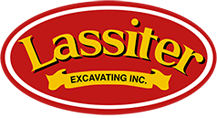Pier Drilling 101

Pier drilling is a very common technique used in construction for the purpose of supporting structures above ground, which is especially important in the California and Sacramento area. These regions are prone to seismic activity which can cause frequent shifting of the ground beneath different structures. Drilling piers are essential in such areas for providing stability where the ground is subject to move or shake. It can literally prevent the collapse of many homes and businesses!
The basics of pier drilling
How piers are drilled
The key objective of drilling piers is to drill down deeply enough to find stable ground, which can then serve as a foundation for steel columns to be installed for support. The actual digging is done by powerful augers, which are fitted with very sharp blades to cut through earth, after which the cylindrical steel shafts can be put in place. Concrete is then poured in and allowed to set before the entire foundation is inspected by an engineer to confirm its soundness for support. This is a much more economical solution than building a concrete slab foundation, and also just as effective in providing stable support.
Hydraulic push piers vs. helical piers
These are the two most common types of piers, with helical piers often being used to support lighter structures and hydraulic push piers generally used for extremely heavy structures. A helical pier can be visualized as a giant screw, having a long shaft surrounded by spiral plates which act to secure it to the surrounding ground. These piers are driven into the ground by a powerful, constantly rotating machine that is used to drive the pier deep enough so that a torque test confirms that it’s secure and capable of solid support.
A hydraulic push pier is forced into the ground by a hydraulic ram, usually below a damaged building foundation. It keeps drilling until it reaches a level in the ground which is stable and capable of providing consistent support. When all necessary piers have been driven into the ground, a hydraulic pump is attached to them, and the building itself is raised to the desired level. After that, the inserted columns are secured to brackets that are attached to the building foundation, and the column shafts are backfilled to restore the ground area around the building.
Pier drilling in the San Francisco Bay Area region
As you might guess, foundation drilling calls for considerable expertise and knowledge, not to mention the heavy equipment necessary to safely and expertly complete the required work. If you think foundation piers may be needed for your home or place of business, contact us at Lassiter Excavating Inc. at your earliest convenience, and let us answer any questions you may have, or schedule an appointment to inspect your building. Give us a call at (925) 449-3112 or use our online contact form.

